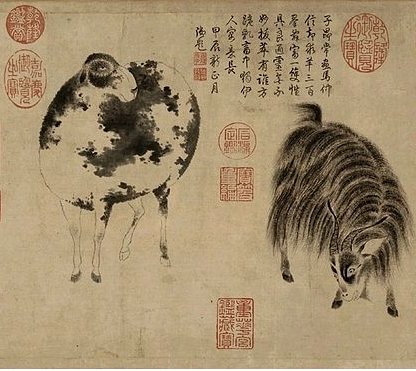Once again. There should be a straw figure representing the previous year and to get rid of him they should burn him. ... 'In Upper Egypt', wrote Sir James G. Frazer in The Golden Bough, citing the observations of a German nineteenth-century voyager, 'on the first day of the solar year by Coptic reckoning, that is, on the tenth of September, when the Nile has generally reached its highest point, the regular government is suspended for three days and every town chooses its own ruler. This temporary lord wears a sort of tall fool's cap and a long flaxen beard, and is enveloped in a strange mantle. With a wand of office in his hand and attended by men disguised as scribes, executioners, and so forth, he proceeds to the Governor's house. The latter allows himself to be deposed; and the mock king, mounting the throne, holds a tribunal, to the decisions of which even the governor and his officials must bow. After three days the mock king is committed to the flames, and from its ashes the Fellah creeps forth ...
Possibly the tall fool's cap is reflected in Cb11-9, where in rongorongo times the Aquila constellation began to rise with the Sun:
A song to the Water (vai o ako) could perhaps have been the beginning of ceremonies connected with a new year. This was when the Eye of the Archer (Ain al Rami) rose heliacally 260 days from Sheratan. The sweet rain waters of early spring would change the dry winter earth ('year of straw') into a pleasant green pasture. But first the pair of mock (moko) kings had to be disposed of. This was when 3 times the cycle of Mercury had been reached, i.e. when 3 * 88 = 264 days had been counted (hia) from Sheratan:
Not until then could 'a little light' begin to show itself:
Counting again: (658 + 268) / 2 = 463 - where 65 = 5 * 13 and 26 = 2 * 13 and 7 * 13 = 91 - we can imagine a position for the central Cb11-15 immediately before day 364 + 100. January 10 with a rising kahi would then be similar to day 365 + 100:
Heliacal stars of Aquila - 7 of them - are inhabiting the first 4 days beyond kahi. Possibly we should compare with the G text, where glyph 465 - according to my interpretation - coincided with heliacal Tau-ono and the end of the old manzil year:
A somewhat similar structure but a different time. |










